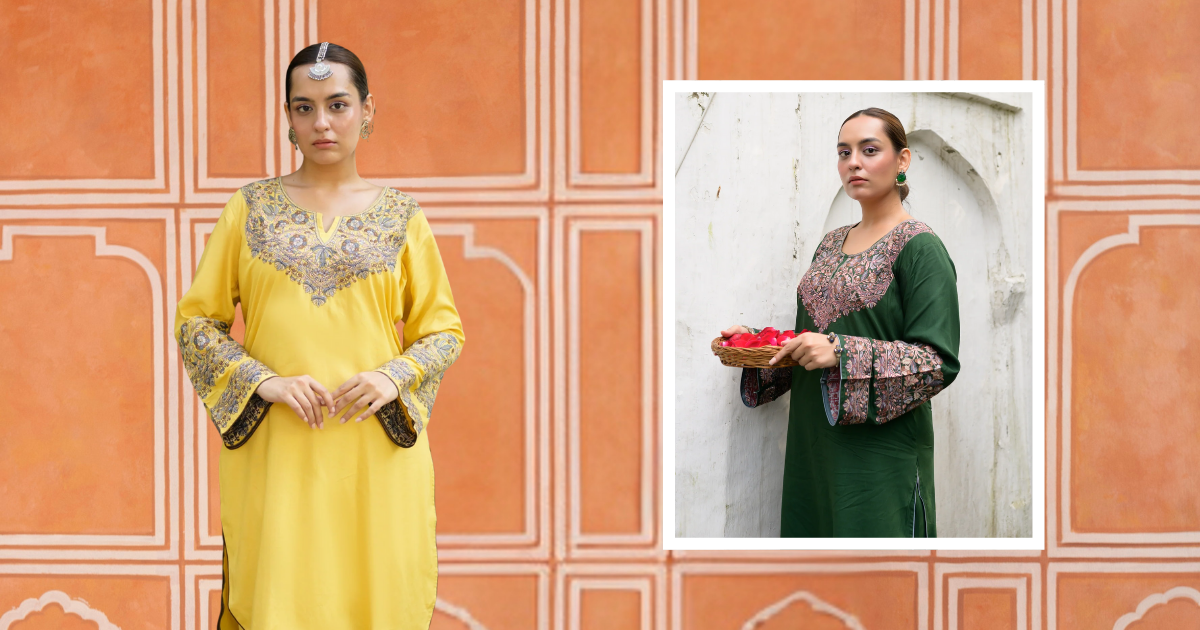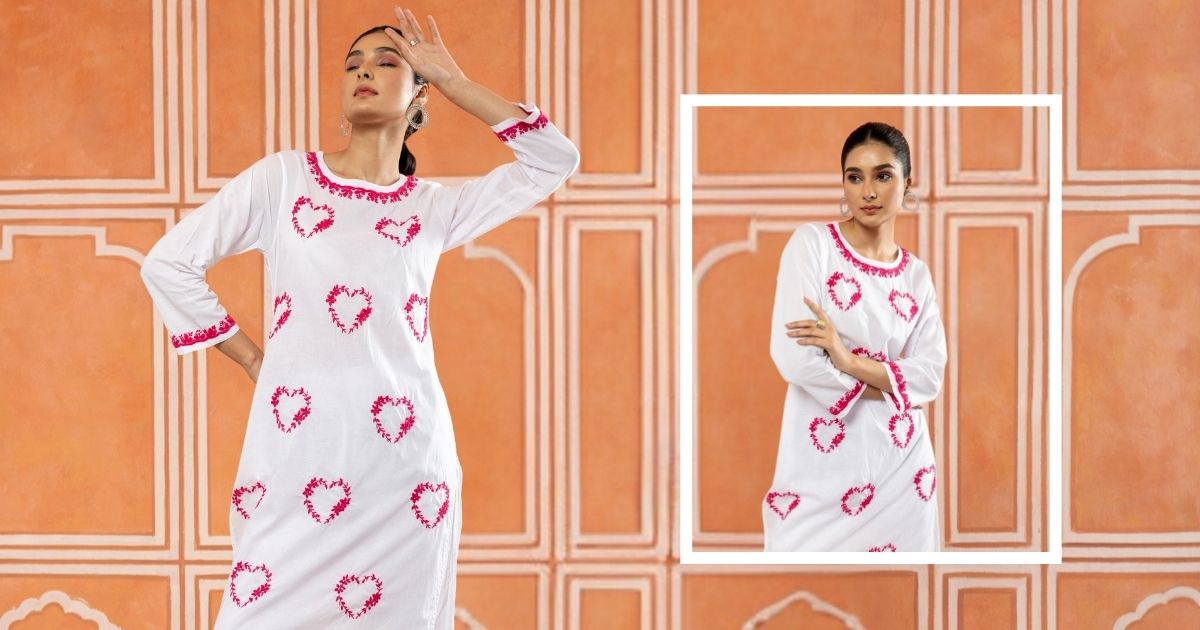Decoding Lucknow’s most poetic embroidery in human, honest terms
A true hand‑embroidered Chikankari kurta can take 7–20 days and 32 specialist stitches to finish. Fair wages, certified cotton, and small‑batch production raise the cost, but the result is a breathable heirloom that lasts for decades.
Key Takeaways
-
Time costs: up to 160 artisan hours.
-
Heritage premium: 32 historic stitches, UNESCO‑listed craft.
-
Fair wages: your rupees sustain artisan families.
-
Cost‑per‑wear wins: a ₹15,000 kurta at 40 wears = ₹375 CPW.
-
Buy smart: choose Craftmark labels & inspect shadow work.
1. Heritage & Legacy—Stories in Every Stitch
Chikankari originated in Lucknow’s royal courts in the late 18th century and features 32 named stitches, including bakhiya and jaali. It is recognised on UNESCO’s list of intangible cultural heritage.
Why it adds cost: You’re buying centuries of living history, not just fabric.
Fig 1. A third‑generation artisan hand‑draws a jasmine motif in Chowk, Lucknow.
2. The Nine‑Step Crafting Journey
-
Design sketch
-
Block carving & pigment printing (chapa)
-
Fabric selection (cotton, muslin, chiffon)
-
Hand embroidery (up to 160 hours)
-
Thread clipping
-
First wash to remove pigment
-
Starching & sun‑drying
-
Three‑point quality check
-
Finishing & eco‑packaging
Skipping any step compromises the garment.
3. Skill & Time Investment
Artisans typically apprentice 15–20 years before leading a frame. A full‑sleeve motif can hold 1,200+ micro‑knots.
Cost math: At a fair‑trade wage of ₹160 per hour, labor alone can top ₹25,600 before materials
4. Material Matters
Namastay uses Premium, OEKO‑TEX®‑certified cotton and chiffon give that weightless drape. We refuse polyester/synthetic blends that pill after one season
Feel it—pure cotton keeps you cool through a 40 °C Lucknow summer.
5. Ethical Wages & Fair Trade
Namastay partners directly with Craftmark‑certified cooperatives. Artisans receive fair wages, health cover, and daycare stipends—documented by India’s Ministry of Textiles report (2024) (MoT).
Yes, it lifts cost—but it lifts communities too.
6. Quality Assurance & Limited Supply
Only 5 % of pieces marketed as “Chikan” are fully hand‑embroidered on the market. Namastay rejects 1 in 10 items that fail QC, ensuring you receive resilient seams and uniform tension.
Fig 3. The pigment rinses away, the artistry stays.
7. Machine vs. Hand: The Price Divide
Feature |
Machine Embroidery |
Hand Chikankari |
|---|---|---|
| Stitch Count / cm | ~6 | 18–25 |
| Motif Depth | Flat | Shadowed & Dimensional |
| Time per Kurta | 1–2 hrs | 7–20 days |
| Longevity | 20 washes | Decades |
| Typical Price (INR) | ₹1,500–4,000 | ₹8,000–₹45,000 |
Choose a machine for trend‑wear, choose hand‑work for forever‑wear.
8. How to Spot Genuine Chikankari
-
Flip the Fabric: look for irregular knots.
-
Shadow test: hold to light; pattern shows through
-
Thread Tug Test: gentle pull; authentic stitches rebound.
FAQs
Why do two similar kurtas vary in price?
Differences in stitch density, fabric grade, and artisan seniority.
Is machine Chikankari worth it?
Good for short‑term budgets, but lacks the texture and lifespan of handwork.
Care tips?
Cold hand‑wash the first three times, then gentle machine cycle in a laundry bag and line‑dry.
Conclusion
Chikankari isn’t fast fashion; it’s poetry in thread crafted slowly for you. Every wear keeps the craft alive, every rupee fuels fair wages. Choose, care, repeat—and own a breathable heirloom that links your story with Lucknow’s artisans.

















